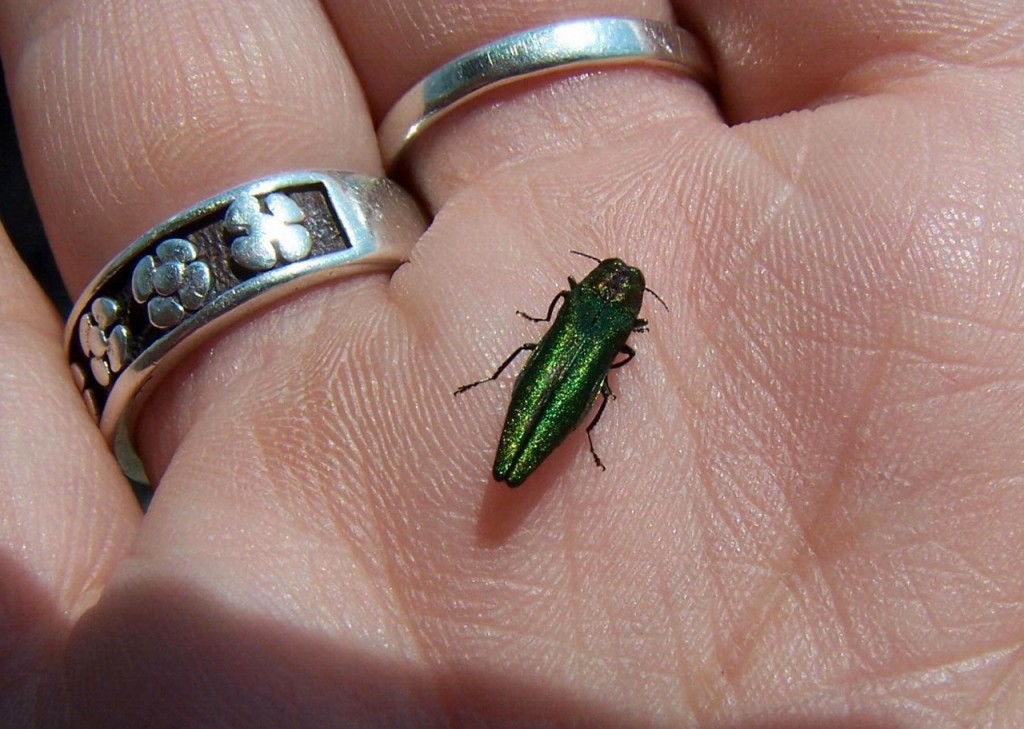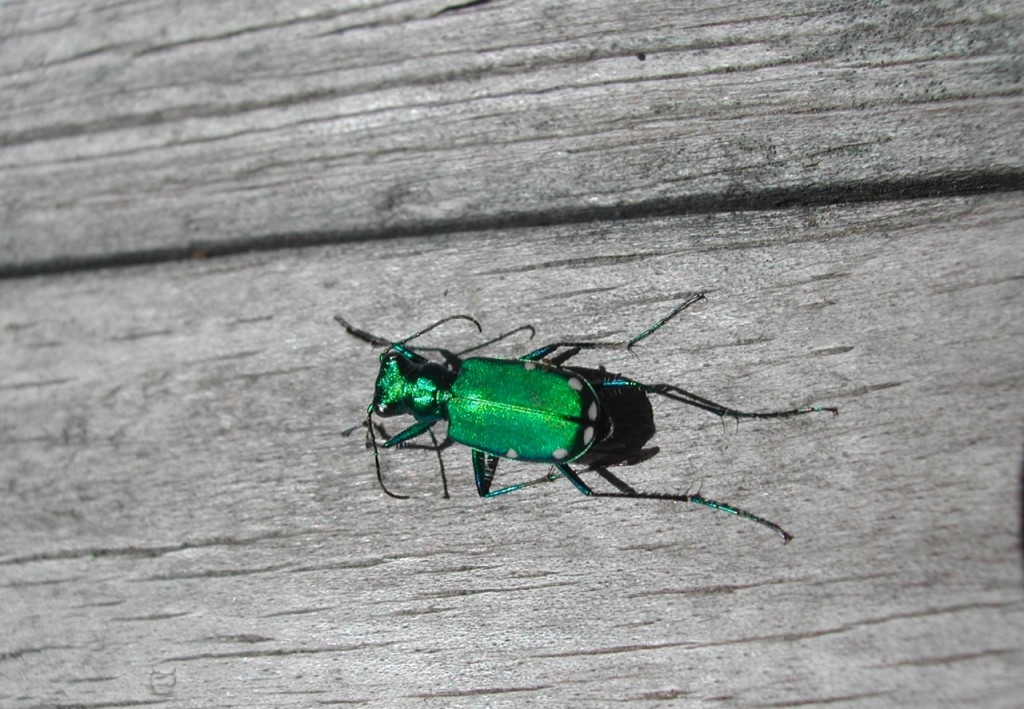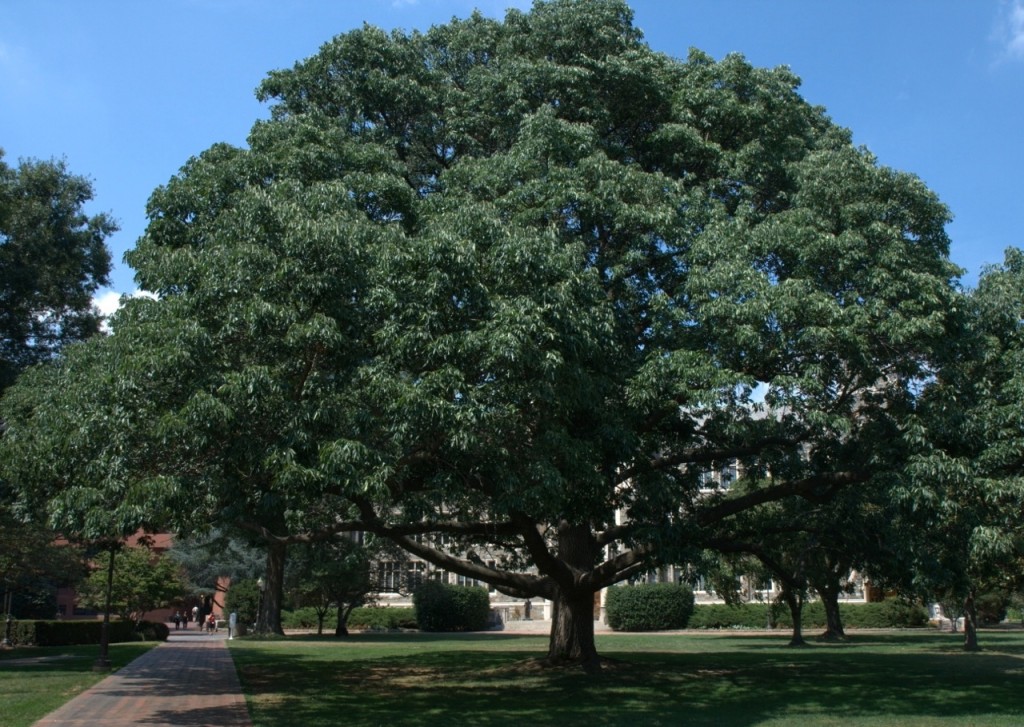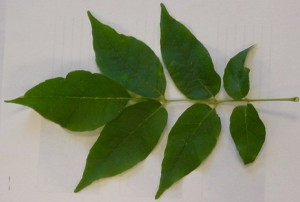Ash trees: durable, useful, threatened
Babe Ruth, Ted Williams, Joe DiMaggio, Stan Musial, Jackie Robinson and Hank Aaron all had one thing in common besides batting their ways into the Hall of Fame. They all used Louisville Sluggers and all admired the workhorse durability and incredible elasticity of American ash wood.
While almost every American has felt and lived with the endearing qualities of ash wood, few could recognize an ash tree from an alder, even if one came down on their parked car in a severe thunderstorm.
The strength, but lightness, and pliant shape-ability of ash wood have long made it a favorite among craftsmen and industries. Besides baseball bats, ash continues to be used as the primary wood for hockey sticks, tennis rackets, paddles, and almost all gardener hand tools. Ash is routinely used in the manufacture of small airplanes and watercraft. Most churchgoers have comforted their backsides in church pews made of ash; and, until a few years ago and the development of composites, almost every residential door jam in America was made of ash wood. Ash wood is now enjoying a new popularity among cabinetmakers. As firewood, ash’s slightly flammable sap and sweet smell make it a cozy cold-weather favorite. Ash trees also grace our cityscapes and perform vital services of cooling and air-quality improvements, as these trees are capable of flourishing despite urban pollution.
As trees go, on the evolutionary scale of things, ash is a relative newcomer and is one of only a couple of tree species in North America which belong to the Old World olive family. Ash is a close relative to lilacs and forsythias.
There are six species of ash in Illinois, but only two species grow in the forested bluff lands of Monroe County. White Ash (Fraxinus americana) is the most prevalent, comprising 3-5% of most forested stands. White ash is usually found on eastern or northern-facing mid-slopes, not on the driest ridge tops. Given a little light and room, a white ash can easily reach a height of 100 feet and a four-foot trunk diameter.
White ash almost always sports a distinctive, straight columnar trunk, with slender, higher-up branches forming a large, oval-shaped crown. The bark is gray, with diamond-shaped furrows between flat-topped ridges. White ash leaves are opposite and pinnately compound, just like hickories. Each leaf has 5-9 lance-shaped, 5-inch long, leaflets. The leaflets are green and smooth on their upper sides, and pale-whitish on their bottoms.
Our region’s other ash, blue ash (Fraxinus quadrangulata) is found only here and there and prefers the limestone cliff areas of our bluff corridor. It’s a smaller tree than white ash, reaching 70 feet, and has an irregular crown, with many short, sturdy branches. Its bark looks very much like white ash. Leaves, too, are pinnately compound, lance-shaped, with 5-11 leaflets. Blue ash has a distinctive, distinguishing feature: its twigs are square and have keeled edges. And, if you twirl a twig of blue ash in a bit of water, it will immediately turn the water blue–the sap was used as a dye by both Native Americans and early settlers.
Both white and blue ash trees, like all ash, have gender; there are male and female trees. Flowers– inconspicuous, in purplish clusters–are wind pollinated. The fruits, appearing only on female trees, are winged, paddle-shaped “samaras,” just like a maple’s fruit, with a single seed. After oak acorns and hickory nuts, ash seed form an important winter food source for wildlife in our woods. Wood ducks, bobwhite quail, wild turkeys, finches, grosbeaks, squirrels, mice and rabbits relish ash seed. And, in concert with all native plants, ash trees host native insects and thus provide a larder for birds and additional wildlife who hunt for bug bites amongst the rich foliage.
Ash also contributes valuable wildlife nesting habitat. Because ash tends to form trunk cavities, red-headed, red-bellied and pilleated woodpeckers love to drill bole holes in ash for homesteads. Once they have opened the boles, wood ducks, owls, nuthatches and squirrels often take up secondary residence.
Ash leaves also are the larval host for about 150 species of butterflies and moths, especially sphinx moths, which as caterpillar larvae eat the leaves. Ash leaves have extremely high sugar and nitrogen levels; and, once dropped, ash leaf litter is notoriously good habitat for morel mushrooms in spring. Common morels (Morchella esculenta), thick-footed morels (Morchella crassipes), and narrow-head morels (Morchella angusticeps) all flourish in ash duff, especially if it has been burned.
And nothing rivals the stunning beauty of ash fall foliage. Among the first leaves in the forest to turn colors and drop, the deep, rich maroons of white ash foliage and the clear, butter-stick yellows of blue ash foliage, with the just turning color pallet of our oaks and hickories as backdrop, are almost enough to make a grown woodsman cry.

An adult emerald ash borer. Photo courtesy Marianne Prue, Ohio Department of Natural Resources - Division of Forestry, bugwood.org
Unfortunately, a beetle, the emerald ash borer (Agrilus planipennis), a native to China and Russia, and believed to have been a stowaway in ash packing materials, was discovered in Michigan in 2002. While the adult beetles do no damage to trees, their larvae bore into the wood, tunneling through the cambium layer of bark that carries water and nutrients. The S-shaped tunnels made by the larvae eventually destroy the nutrient-carrying capacity of the trees causing branches and then the entire tree to die. In areas with emerald ash borer infestations, ash trees have died by the tens of thousands. To date, no cure has yet been found, although several experimental solutions are underway.
Emerald ash borer insects were discovered in Illinois in June 2006, and since have spread to 35 counties, largely in the northeast and east central part of the state. In Missouri, the insects were found in 2008 in Wayne County and since then in southeastern Missouri and in Platte County near Kansas City. Damage estimates resulting from emerald ash borer run into the millions in Illinois and, in the U.S. as a whole, run into the billions of dollars.

This native and beneficial six-spotted green tiger beetle should not be confused with emerald ash borers. Photo courtesy Pennsylvania Department of Conservation and Natural Resources - Forestry Archive, bugwood.org
The beetles hitchhike along as people move nursery stock or firewood. On their own, adult insects can fly up to a half-mile. Careful prohibitions in cross-state shipments of ash firewood seem to be slowing the beetle’s spread and may be the most effective measures at keeping ash trees a part of our living forests and streetscapes.
It has also been discovered that not all ash are falling victim to emerald ash borer. Ash growing in healthy forests, with a rich diversity of tree species — like our oak-hickory bluff lands — may have more resilience to the insect. Keeping our woodlands healthy means preventing infestations by alien invaders like emerald ash borers and reducing the number of alien invaders already on our lands.
Clearing bush honeysuckle and tree-of-heaven helps our native oak-hickory replace themselves as seeds and seedlings have sufficient sunlight to grow strong and tall. Removing additional forest invaders, such as garlic mustard, Japanese vine honeysuckle, Japanese hops, Oriental bittersweet, and creeping wintergreen helps keep the forest floor open for wildflowers, mushrooms and wildlife.
Two upcoming workshops will provide landowners with information on keeping their forested lands healthy.
Clifftop is hosting a Prescribed Burn Workshop from 9 am to noon on Saturday, January 19th at the Monroe County Annex, 901 Illinois Ave., Waterloo. The workshop will include discussions of the benefits of prescribed fire, an introduction to the requirements of the Illinois Burn Law, and a safety refresher for prescribed fire crews. Pre-registration for this free event may be done by emailing clifftop@htc.net or by calling 618-458-4674, and is required by January 17th.
The Illinois Extension Service is hosting a Forest Pest Workshop from 9am to 3 pm on March 14th in Collinsville. Sessions on emerald ash borer, thousand cankers disease and invasive plants will include identification, symptoms, and management techniques. A $25 registration fee covers the on-site lunch and training materials. Preregistration is required and may be done by calling 618-344-4230.
Should our ash trees sadly turn “ashes to ashes” and our forests fall victim to yet another invasive pest we – and our wildlife – must turn then to the next stanza of “dust to dust” in a poverty-stricken habitat.
CLIFFTOP, a local nonprofit organization, is focused on preserving and protecting area bluff lands.
A version of this article appeared in the 21 December 2012 edition of the Monroe County Independent.
© 2012 all content rights reserved Clifftop NFP
Comments are currently closed.


